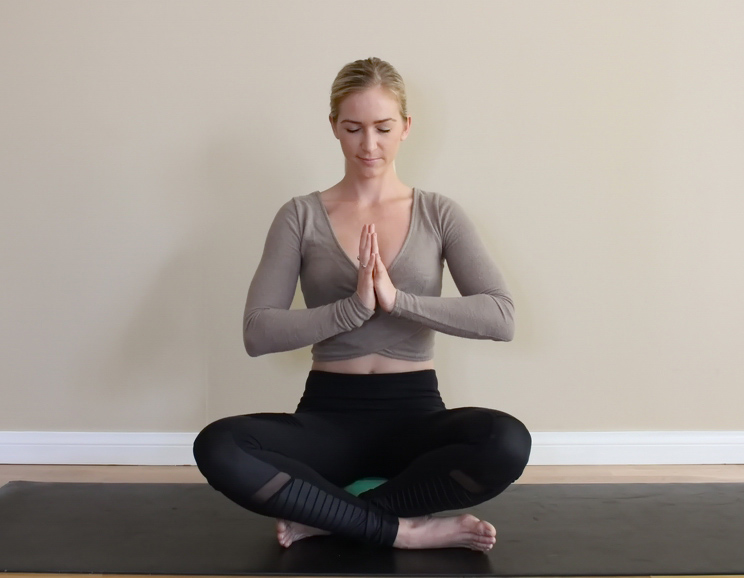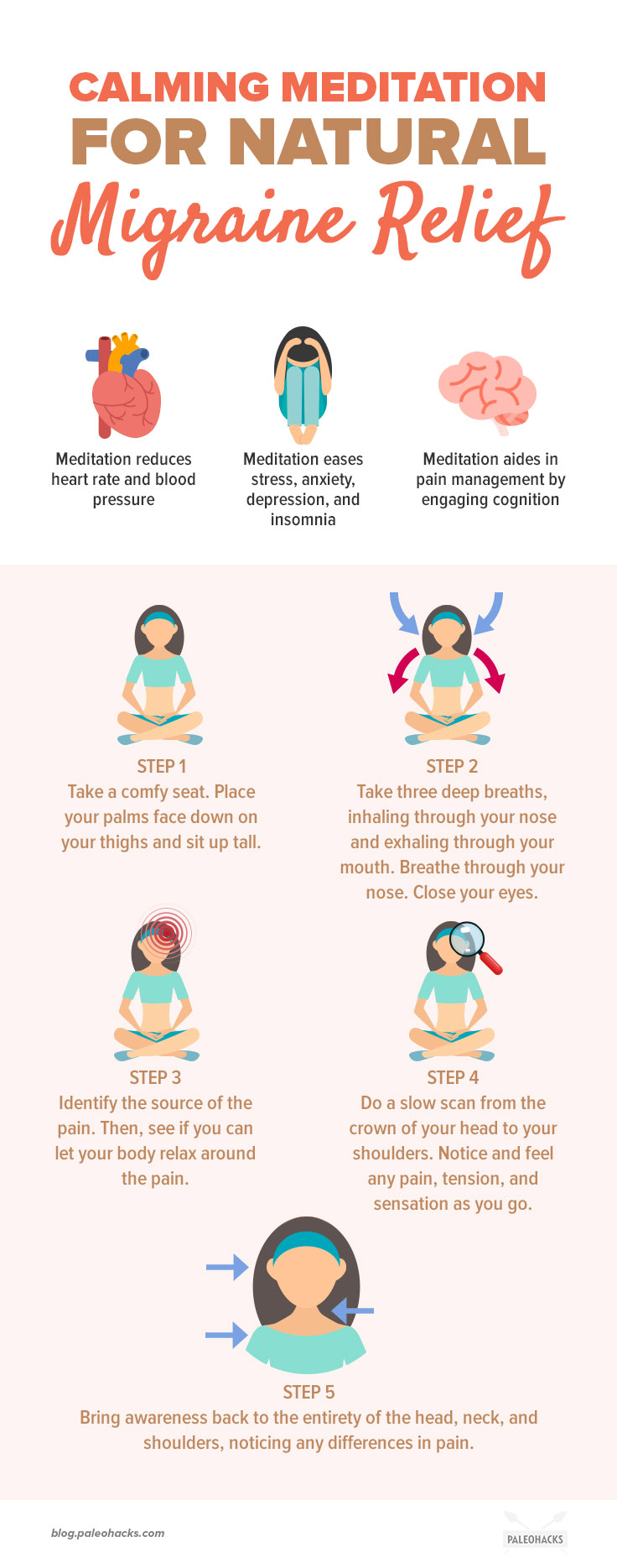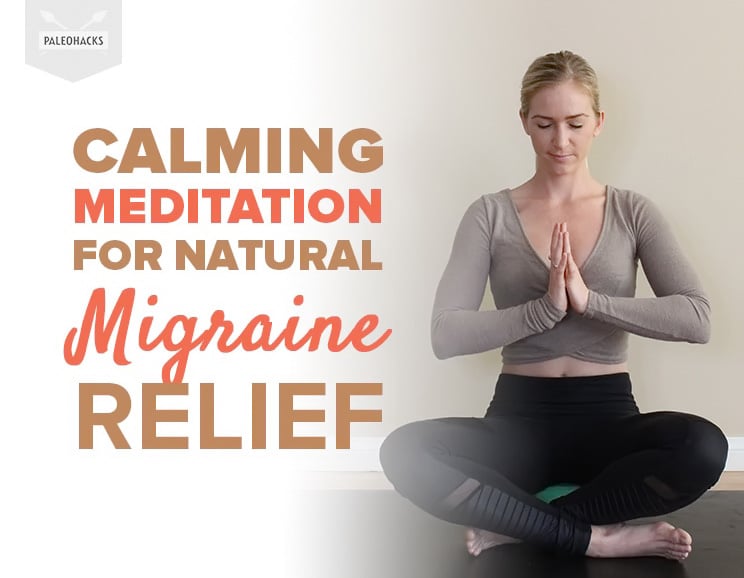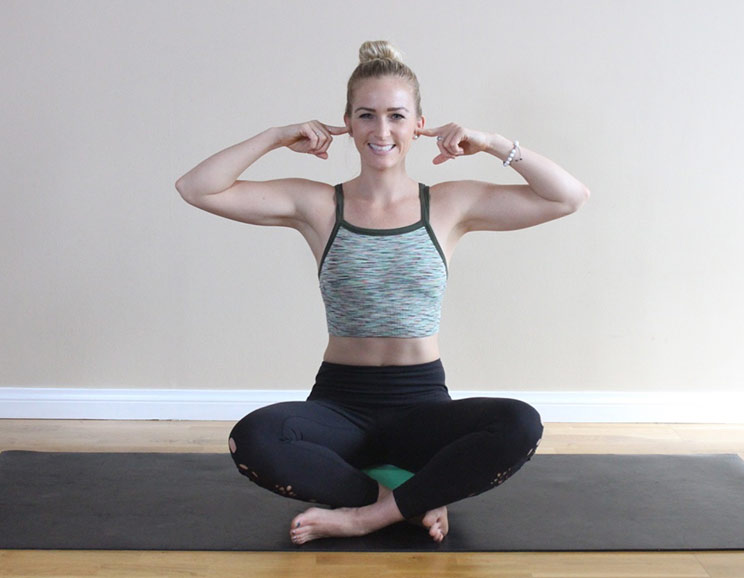If you suffer from throbbing migraines, try this mindfulness meditation that guides you through a full body scan and cleansing breaths to help you release your pain.
With the fast-paced world we live in, it’s no wonder that many of us are chronically stressed out. Even worse, the tension and anxiety that often come along with it can turn into an excruciating migraine. Ouch.
A migraine is a chronic disorder that requires long-term management and preventative strategies. While those strategies typically consist of anti-nausea drugs and pain relievers, meditation could offer a more natural approach to dealing with these debilitating headaches. (1)
Suffering from a sore neck, back and shoulders? Get our mobility guide to ease pain and soreness.
Get The FREE Mobility Guide To Fix Your Pain Today!
Migraine symptoms include pounding headaches, nausea, vomiting, and sensitivity to light. (2) Sufferers typically report throbbing pain on one side of the head as well. No one knows exactly what causes migraines, but different migraine triggers include changes in weather, changes in sleep, certain foods or drinks, caffeine, anxiety, and stress.
Meditation can help with migraines in a few different ways:
- Reduces heart rate and blood pressure: Meditation increases parasympathetic activity, reducing blood pressure and heart rate and bringing the body into a more relaxed and restful state. (3)
- Eases stress, anxiety, depression, and insomnia: Meditation is a quick and portable way to help reduce pain and emotional tension and is an effective alternative to pharmaceuticals. (4)
- Aides in pain management: Mindfulness meditation reduces migraine symptoms by directing attention to sensory events, engaging the mechanisms that support the cognitive control of pain. (5)
Mindfulness Meditation for Migraines

Mindfulness meditation can reduce chronic pain by over 50 percent. (6) This is because mindfulness soothes the brain patterns of underlying pain. Eventually these changes can take root and alter the structure of the brain itself, so that patients no longer feel pain with the same intensity.
Use this mindfulness meditation to let go of your pain by becoming aware of it from an outside perspective.
Step 1: Begin by taking a comfortable seat. Place your palms face down on your thighs and sit up tall. Relax your shoulders and the muscles of your face.
Step 2: Take three deep, cleansing breaths, inhaling through your nose and exhaling through your mouth. Then, find a more natural breath in and out of the nose, and close your eyes.
Step 3: Begin to identify the source of the pain (head, neck, eyes, temples). Then, see if you can move through that pain and tension. Wherever you feel pain, accept it, sit with it, and let the body relax around the pain.

Step 4: Now, do a slow scan from the crown of your head to your shoulders. Notice and feel any pain, tension, and sensation as you go through. Whenever you observe pain, practice moving into it, sitting with it, and accepting it. Make sure to pay attention to these particular areas:
- Crown of the head
- Forehead
- Eyes: Start with the right eye, including the eyelid, eyeball, then behind the eyeball. Repeat on the left eye. Then feel both eyes, scanning the entire eye area and noticing all sensations.
- Temples: Feel the right side, then the left.
- Jaw: Feel the right side and then the left. Let your jaw soften.
- Mouth: Start with your tongue, the top and bottom of your mouth, and the teeth.
- Ears: Feel behind and underneath the earlobes, then the inside of the ears.
- Neck: Start at the base of your neck and then move upwards.
- Entire head: Start at the base of your scalp, up and around the back of the head, and back up to the crown.
Step 5: Bring awareness back to the entirety of the head, neck, and shoulders, noticing any differences in pain. Send yourself love and gratitude. Take a deep, cleansing breath, then slowly open your eyes.

(Read This Next: How to Practice Meditation for Natural Pain Relief)




 Zucchini Noodles with Coconut Lime Shrimp
Zucchini Noodles with Coconut Lime Shrimp









Show Comments